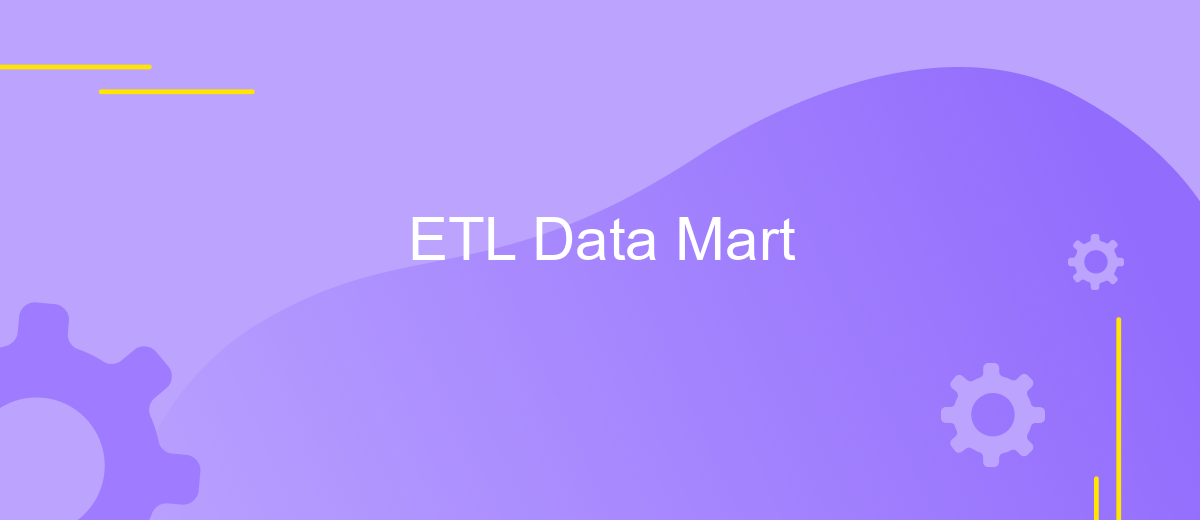ETL Data Mart
ETL (Extract, Transform, Load) Data Mart is a specialized subset of a data warehouse designed to serve specific business needs. It involves extracting data from various sources, transforming it into a consistent format, and loading it into a centralized repository. This process enhances data accessibility and supports informed decision-making by providing targeted, high-quality data tailored to specific analytical requirements.
Introduction
ETL (Extract, Transform, Load) processes are essential in the creation and management of data marts, which are specialized repositories designed to serve specific business functions. These processes ensure that data is accurately extracted from various sources, transformed into a suitable format, and loaded into the data mart for analysis and reporting purposes. Proper implementation of ETL processes can significantly enhance the quality and accessibility of business intelligence.
- Extraction: Gathering raw data from multiple sources.
- Transformation: Converting data into a usable format.
- Loading: Inserting transformed data into the data mart.
Integrating data from diverse sources can be challenging, but services like ApiX-Drive simplify this process. ApiX-Drive allows seamless integration between various platforms, automating the data flow and ensuring consistency. By leveraging such tools, businesses can streamline their ETL processes, reduce manual intervention, and maintain high data quality, ultimately driving better decision-making and operational efficiency.
Benefits and Use Cases

ETL Data Mart offers numerous benefits, including improved data quality, enhanced performance, and streamlined data management. By extracting, transforming, and loading data from various sources into a centralized repository, organizations can ensure data consistency and accuracy. This centralized data hub enables faster query performance and more efficient data retrieval, which is crucial for making timely and informed business decisions. Additionally, ETL processes help in reducing data redundancy and storage costs by integrating only relevant data into the data mart.
ETL Data Marts are widely used in various business scenarios, such as sales and marketing analytics, financial reporting, and customer relationship management. For instance, companies can leverage ETL Data Marts to analyze sales trends and customer behavior, enabling targeted marketing strategies. Moreover, integrating ETL Data Marts with services like ApiX-Drive can further enhance data integration processes by automating data transfers between different applications and platforms. This ensures seamless data flow and reduces manual effort, allowing businesses to focus on strategic initiatives and drive growth.
Data Extraction, Transformation, and Loading (ETL) Process

The ETL (Extract, Transform, Load) process is a critical component in building a Data Mart, ensuring that data is accurately and efficiently moved from source systems to the Data Mart. This process involves three main steps: extraction, transformation, and loading.
- Data Extraction: This step involves retrieving data from various source systems, such as databases, APIs, and flat files. Tools like ApiX-Drive can simplify this process by providing seamless integration with multiple data sources, allowing for automated data extraction.
- Data Transformation: Once the data is extracted, it needs to be cleaned, validated, and transformed into a suitable format for analysis. This may involve data cleansing, normalization, aggregation, and applying business rules to ensure data consistency and quality.
- Data Loading: The final step is loading the transformed data into the Data Mart. This involves inserting the data into the target database, ensuring it is organized and indexed for efficient querying and reporting.
By following these steps, organizations can ensure that their Data Mart is populated with high-quality, reliable data, enabling better decision-making and more insightful analytics. Using tools like ApiX-Drive can streamline the ETL process, reducing manual effort and improving overall efficiency.
Data Mart Design and Considerations

Designing a data mart involves careful planning and consideration to ensure it meets the specific needs of the business. The first step is to identify the key performance indicators (KPIs) and metrics that the data mart will support. This helps in defining the scope and objectives of the data mart.
Once the objectives are clear, the next step is to design the schema. This includes choosing between a star schema or a snowflake schema, depending on the complexity and the type of queries that will be run. The schema should be optimized for query performance and ease of use.
- Identify data sources and ETL processes
- Define the schema (star or snowflake)
- Ensure data quality and consistency
- Plan for scalability and future growth
- Consider integration tools like ApiX-Drive for seamless data flow
It is also important to consider the tools and technologies that will be used for data extraction, transformation, and loading (ETL). Tools like ApiX-Drive can simplify the integration process by providing a user-friendly interface and robust automation features. Finally, always plan for data security and compliance to protect sensitive information.


Data Quality and Governance
Ensuring data quality and governance is crucial for the successful implementation of an ETL Data Mart. High-quality data is essential for accurate analysis and decision-making. To achieve this, it is important to establish rigorous data validation and cleansing processes. These processes should identify and rectify inconsistencies, duplicates, and errors in the data before it is loaded into the data mart. Implementing automated tools and scripts can streamline these tasks, ensuring that the data remains reliable and up-to-date.
Data governance involves defining clear policies and procedures for data management, access, and security. This includes setting up roles and responsibilities for data stewardship and ensuring compliance with regulatory requirements. Tools like ApiX-Drive can facilitate these processes by providing seamless integration between various data sources and the ETL pipeline. ApiX-Drive allows for automated data synchronization, reducing the risk of human error and ensuring data integrity. By leveraging such services, organizations can maintain high standards of data quality and governance, ultimately enhancing the value derived from their data assets.
FAQ
What is an ETL Data Mart?
Why is ETL important for Data Marts?
How often should ETL processes be run for a Data Mart?
What are the key challenges in setting up an ETL Data Mart?
How can automation tools help in managing ETL processes for Data Marts?
Do you want to achieve your goals in business, career and life faster and better? Do it with ApiX-Drive – a tool that will remove a significant part of the routine from workflows and free up additional time to achieve your goals. Test the capabilities of Apix-Drive for free – see for yourself the effectiveness of the tool.

